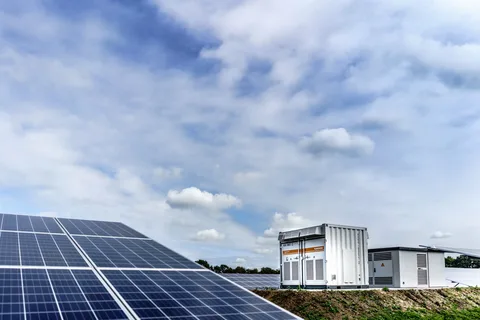
As the world strives towards a sustainable energy future, the role of energy storage is becoming increasingly pivotal. Energy storage technologies, particularly batteries, have made significant strides, but the future promises even more innovative solutions. This article explores the evolving landscape of energy storage, delving into the advancements in batteries and the emerging technologies that extend beyond conventional energy storage methods.
In the transition to renewable energy sources, energy storage plays a crucial role in balancing supply and demand. Batteries and other storage technologies act as the linchpin, enabling the efficient utilization of intermittent renewable sources like solar and wind.
Lithium-ion batteries have been the stalwart of portable electronics and electric vehicles. Ongoing research and development continue to enhance the energy density, lifespan, and safety of lithium-ion batteries, making them more efficient and cost-effective.
Solid-state batteries represent a significant leap forward. By replacing liquid electrolytes with solid materials, these batteries offer improved safety, higher energy density, and potentially faster charging times. The automotive industry, in particular, is eyeing solid-state batteries as the next frontier in electric vehicle technology.
Sodium-ion batteries are gaining attention as a potential alternative to lithium-ion. Sodium is abundant and less expensive than lithium, making these batteries an attractive option for grid-scale energy storage. Research is ongoing to overcome challenges and optimize the performance of sodium-ion batteries.
Flow batteries, characterized by separate tanks for electrolyte storage, offer scalability advantages. Vanadium flow batteries, in particular, are being explored for large-scale stationary applications, providing grid stability and enabling the integration of renewable energy sources.
Innovations in mechanical energy storage include gravity-based systems. These systems store energy by lifting heavy masses during times of excess electricity generation and releasing them to generate power when demand is high. This concept, seen in projects like gravity trains and flywheels, provides a unique solution for grid balancing.
CAES involves compressing air and storing it in underground caverns. When electricity is needed, the compressed air is released, driving turbines to generate power. Ongoing developments aim to improve efficiency and explore new methods of utilizing CAES for large-scale energy storage.
Quantum energy storage is an emerging frontier leveraging the principles of quantum mechanics. Quantum batteries, theoretically, could store and release energy at unprecedented rates. While in early stages of research, this technology holds the potential to revolutionize energy storage in ways that were once deemed impossible.
Biological energy storage, inspired by natural processes like photosynthesis, explores the use of biological systems to store and release energy. This innovative approach draws from the efficiency of biological systems and could pave the way for sustainable and eco-friendly energy storage solutions.
Despite advancements, cost and scalability remain significant challenges. Many emerging technologies, while promising, may struggle to compete with the established infrastructure and economies of scale associated with conventional energy storage methods.
The environmental impact of energy storage technologies is a critical consideration. Ensuring that the production, operation, and disposal of storage systems align with sustainability goals is essential to avoid unintended consequences.
The future of energy storage is intertwined with the development of smart grids. Smart grids enable dynamic interaction between energy producers, consumers, and storage systems. This integration enhances efficiency, resilience, and the overall stability of the energy ecosystem.
The future of energy storage holds exciting possibilities, from advancements in traditional batteries to the exploration of novel technologies. As the world seeks cleaner and more sustainable energy solutions, the evolution of energy storage will be at the forefront, shaping the trajectory of the global energy landscape.
What are the advancements in battery technology? Advancements in battery technology include improvements in lithium-ion batteries, the development of solid-state batteries for increased safety and energy density, and the exploration of alternative technologies such as sodium-ion batteries and flow batteries.
What is the potential of solid-state batteries? Solid-state batteries offer improved safety, higher energy density, and potentially faster charging times by replacing liquid electrolytes with solid materials. They are considered a promising technology, particularly in the electric vehicle sector.
What are alternative battery technologies beyond lithium-ion? Alternative battery technologies include sodium-ion batteries, which use sodium instead of lithium, and flow batteries, characterized by separate tanks for electrolyte storage. These technologies offer potential advantages for grid-scale energy storage.



WhatsApp us